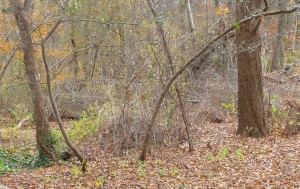It’s not just the cooler weather. Late fall has its unmistakable quality of darkness and cold closing in. How does this affect us and how can we respond?
 Late autumn feels unusually quiet. The trees out my window have mostly lost their leaves. The branches are almost bare. The air has a tinge of sadness as the transition to hard, cold winter still lies ahead. Even the slanting sunlight barely lifts the mood.
Late autumn feels unusually quiet. The trees out my window have mostly lost their leaves. The branches are almost bare. The air has a tinge of sadness as the transition to hard, cold winter still lies ahead. Even the slanting sunlight barely lifts the mood.
Our natural tendency is to push these feelings away: the inner sadness, reserve, caution and the unspoken fear of the long months of winter that traditionally threatened survival itself. Better to stoke up the fire and eat hearty food. Take what steps are necessary to protect ourselves and our families against the coming chill.
This fall also presents another option: open yourself to the discomfort of late autumn. Let it in. Invite the historic dread of darkness and cold into your heart. Instead of relying on the season’s traditional festivals—Thanksgiving, Advent, Christmas, Chanukah—to relieve the gut-level malaise and lift the mood, welcome this season of uncertainty. Make a choice to open up instead of closing down.
The forces of Nature have great power, but need not have power over our emotions. When you open yourself to forces that previously felt threatening, they lose some of their power over you. Like the bully you no longer fear, all that ominous winter stuff becomes just part of the environment. In the long run, you will become emotionally more resilient and probably happier.
This kind of fear only traps you if you let it. Most of us are not really in doubt about surviving until next spring. Turn the tables on the feel of late fall to maintain your emotional balance at this, and every other, time of year.